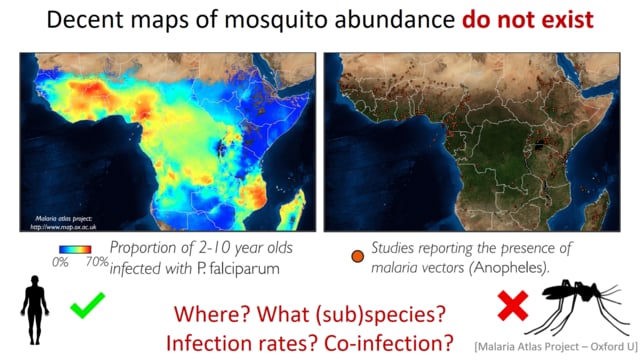ASTMH 2016, Felix J. Hol: “Interrogating Mosquito-pathogen Communities using High-throughput Microfluidics”
Collaborator(s): Stanford University (SU), United States
Published: 14/11/2016
In collaboration with ASTMH, Image Audiovisuals, and session presenters, MESA brings you this webcast from the 65th ASTMH annual meeting in Atlanta, November 2016.
Title: “Interrogating Mosquito-pathogen Communities using High-throughput Microfluidics”
Speaker: Felix J. Hol, Stanford University, California, USA
Session information: Scientific Session 12: “Mosquitoes: Operational Control”
Monday, 14 November, 8am – 9:45 am, Marriott – Room A703/704
Abstract:
Eliminating mosquito-borne diseases requires intimate knowledge of the ecology of vectors. Such knowledge can for instance be used to design effective vector control strategies, or to understand the eco-evolutionary processes that drive range expansions of vectors and pathogens. Current techniques in vector ecology, such as human landing catches or chemically baited traps, are very labor intensive and therefore severely limited in throughput. These limitations prevent the detailed interrogation of mosquito-pathogen communities in the field. We demonstrate a low-cost automated screening tool that enables dissection-free, high-throughput molecular analysis of individual vectors and their pathogens. We exploit the fact that mosquitoes transmit pathogens by expectorating saliva to autonomously collect saliva droplets resulting from single mosquito bites. Multiple cues (e.g. temperature, odorants, texture) are integrated on a microfabricated substrate mimicking human skin, the substrate is designed to maximize its attractiveness to mosquitoes and induce them to bite, thereby depositing saliva. We present behavioral data extracted from laboratory experiments that allow us to quantitatively assess the interaction of mosquitoes with the device. The use of high-throughput microfluidics enables us to perform small volume biochemical analyses on a huge number of pico-to-nanoliter saliva samples in parallel, greatly reducing reagent cost and processing time. We implement multiplexed microfluidic assays that enable the simultaneous characterization of the biting mosquito’s genetic make-up and its pathogens. This platform provides us with a means of high-throughput, high-resolution sampling of individual insects in field and laboratory settings. Large scale application of this tool in public health surveillance may provide early warnings for epidemics, detect the emergence of drug resistance, and track the spread of emerging infectious diseases.
THEMES: Basic Science | Vector Control



